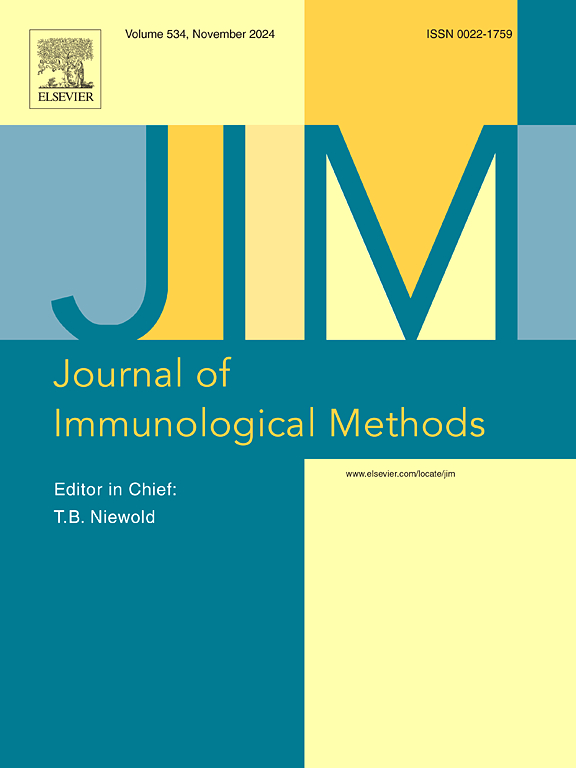在重症感染患者体内检测中和细胞因子的自身抗体的简便检测方法
IF 1.6
4区 医学
Q4 BIOCHEMICAL RESEARCH METHODS
引用次数: 0
摘要
针对I型干扰素(IFN)的自身抗体与COVID-19的不良预后有关。对细胞因子中和自身抗体的测量一直很有限,这阻碍了对其在临床实践中作用的了解。我们的研究表明,一种简便可靠的检测方法可以重现并验证I型或II型IFN自身抗体的中和效力。识别抗细胞因子自身抗体可能会反映出后续感染的早期治疗方法,如使用抗病毒药物或病毒中和单克隆抗体。本文章由计算机程序翻译,如有差异,请以英文原文为准。
An easy assay to detect autoantibodies neutralizing cytokines in subjects with critical infections
Autoantibodies against type I interferon (IFN) are associated with a worse outcome in COVID-19. The measurement of cytokine-neutralizing autoantibodies has been limited, hindering understanding of their role in clinical practice. We showed that an easy and reliable assay can be reproduced and validated to measure the neutralizing potency of autoantibodies directed to type I or type II IFN. Identifying of anti-cytokine autoantibodies might reflect on early treatments for subsequent infections, such as with antivirals or virus-neutralizing monoclonal antibodies.
求助全文
通过发布文献求助,成功后即可免费获取论文全文。
去求助
来源期刊
CiteScore
4.10
自引率
0.00%
发文量
120
审稿时长
3 months
期刊介绍:
The Journal of Immunological Methods is devoted to covering techniques for: (1) Quantitating and detecting antibodies and/or antigens. (2) Purifying immunoglobulins, lymphokines and other molecules of the immune system. (3) Isolating antigens and other substances important in immunological processes. (4) Labelling antigens and antibodies. (5) Localizing antigens and/or antibodies in tissues and cells. (6) Detecting, and fractionating immunocompetent cells. (7) Assaying for cellular immunity. (8) Documenting cell-cell interactions. (9) Initiating immunity and unresponsiveness. (10) Transplanting tissues. (11) Studying items closely related to immunity such as complement, reticuloendothelial system and others. (12) Molecular techniques for studying immune cells and their receptors. (13) Imaging of the immune system. (14) Methods for production or their fragments in eukaryotic and prokaryotic cells.
In addition the journal will publish articles on novel methods for analysing the organization, structure and expression of genes for immunologically important molecules such as immunoglobulins, T cell receptors and accessory molecules involved in antigen recognition, processing and presentation. Submitted full length manuscripts should describe new methods of broad applicability to immunology and not simply the application of an established method to a particular substance - although papers describing such applications may be considered for publication as a short Technical Note. Review articles will also be published by the Journal of Immunological Methods. In general these manuscripts are by solicitation however anyone interested in submitting a review can contact the Reviews Editor and provide an outline of the proposed review.

 求助内容:
求助内容: 应助结果提醒方式:
应助结果提醒方式:


